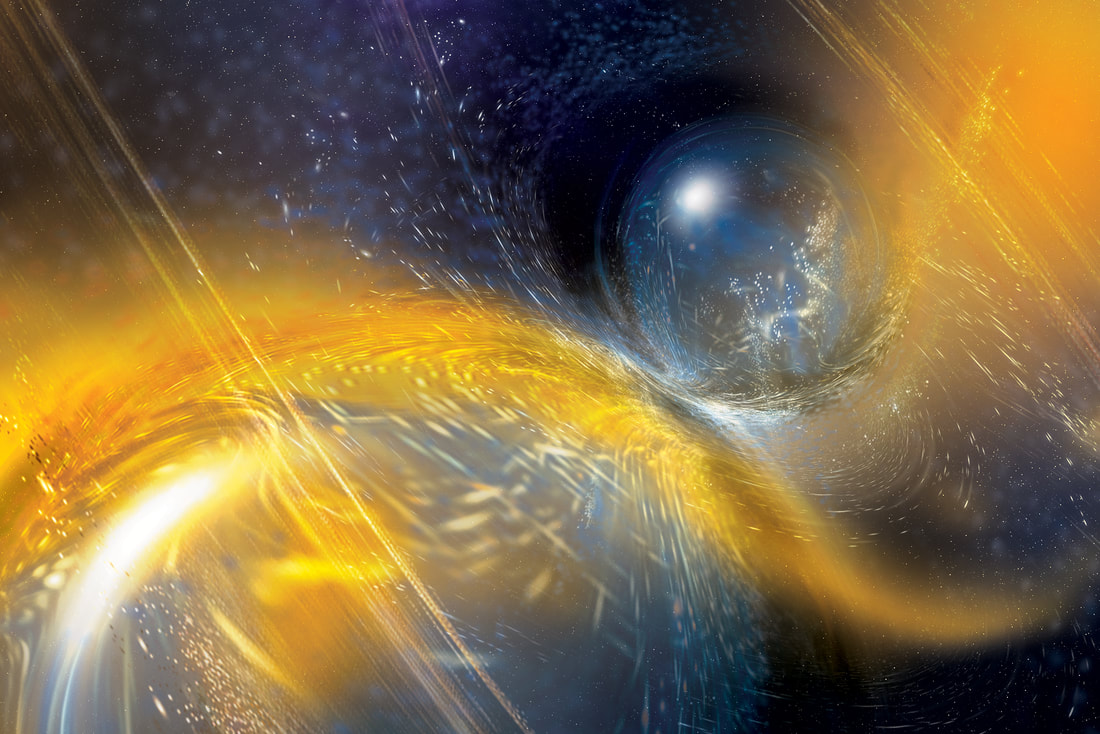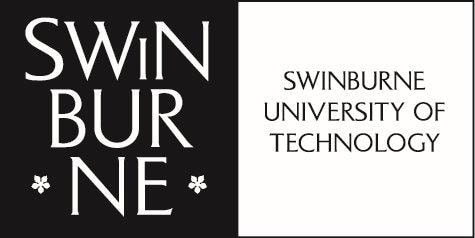|
Artist's impression of the binary neutron star merger producing GW190425. Credit: National Science Foundation/LIGO/Sonoma State University/A. Simonnet. A new collaborative study with the ARC Centre of Excellence for Gravitational Wave Discovery (OzGrav) reveals a possible collision of two neutron stars earlier in 2019—only the second time this type of cosmic event had ever been detected. The gravitational-wave observatory network, that includes the National Science Foundation's LIGO and the European Virgo detectors, picked up what appeared to be gravitational ripples from a collision of two neutron stars back on 25 April 2019.
Gravitational waves and light were first witnessed in the same event in 2017. This second event in 2019, called GW190425, did not result in any light being detected; however, researchers have learned that the collision resulted in a merged object with an unusually high mass. OzGrav postdoctoral researcher Simon Stevenson says: ‘This event is a perfect example of how gravitational-wave astronomy is a completely new and unique way of looking at the Universe. Binaries with similar masses to this event may not exist in the Milky Way or may be completely invisible to conventional radio telescopes’. Neutron stars are the remnants of dead stars that exploded. When two neutron stars spiral together, they undergo a violent merger that sends gravitational waves shuddering through the fabric of space and time. The gravitational waves first detected in 2015 were generated by the fierce collision of two black holes. Since then, scientists have registered dozens of new candidate black hole mergers. The first detection of a neutron star merger took place two years later, in 2017. OzGrav Postdoctoral Researcher Vaishali Adya says: ‘This detection manifests the importance of continued improvement of the already amazingly sensitive gravitational wave detectors, as this event would not have been observable prior to the latest upgrades. OzGrav played a vital role in these upgrades, one of which involved reducing the quantum noise in the detectors’. OzGrav Postdoctoral Researcher Xingjiang Zhu says: ‘The combined mass of the merging objects is surprisingly high, much greater than any previously known double neutron star binaries including the one detected in 2017. This provokes us to think about the nature of this event and how the source might have been formed’. The combined mass of the merged bodies in this event is about 3.4 times that of the mass of the Sun. Typically, neutron star collisions are only known to happen between pairs of neutrons stars with a total mass up to 2.9 times that of the Sun. One possibility for the unusually high mass is that the collision took place not between two neutron stars, but a neutron star and a black hole, since black holes are heavier than neutron stars. But if this were the case, the black hole would have to be exceptionally small for its class. Instead, the scientists believe it is more likely that the event was a shattering of two neutron stars and that their merger resulted in a newly formed black hole. Neutron star pairs are thought to form either early in life—when companion massive stars successively die one by one—or when they come together later in life within dense, busy environments. The data from the 2019 event do not indicate which of these scenarios is more likely—more data and new models are needed to explain the unexpectedly high mass. The discovery suggests that we may have detected an entirely new population of binary neutron star systems. OzGrav Associate Investigator Greg Ashton says: ‘This event was really interesting. The chirp-like signal was seen by two of the three detectors for about 128 seconds before the final merger. Unfortunately, one of the detectors was not observing at the time, which meant that the sky localization was poor. Perhaps because of this, and because it was so far away, no electromagnetic light was observed from this event. Nevertheless, we saw it very clearly in the gravitational wave data and could use that to calculate the masses, spins, and orientations of the objects’. ‘Additional exciting and unexpected discoveries can be expected as the sensitivity of the LIGO detectors improves. OzGrav is working closely with LIGO to improve their sensitivity, developing new instrumentation and analysis techniques’, says Professor Peter Veitch, University of Adelaide OzGrav Node Leader The results were announced today at the American Astronomical Society meeting in Honolulu, Hawaii. The full scientific article will be available here post-embargo: https://dcc.ligo.org/P190425/public
0 Comments
Leave a Reply. |
|
- Home
- About
-
Our People
- Chief Investigators
- Partner Investigators
- Associate Investigators
- Postdocs and Students >
- Professional & Outreach staff
- Governance Advisory Committee
- Scientific Advisory Committee
- Executive Committee
- Equity & Diversity Committee
- Early Career Researcher Committee
- Professional Development Committee
- Research Translation Committee
- OzGrav Alumni
- Research Themes
- Education and Outreach
- Events
- News/Media
- Contact Us
- Home
- About
-
Our People
- Chief Investigators
- Partner Investigators
- Associate Investigators
- Postdocs and Students >
- Professional & Outreach staff
- Governance Advisory Committee
- Scientific Advisory Committee
- Executive Committee
- Equity & Diversity Committee
- Early Career Researcher Committee
- Professional Development Committee
- Research Translation Committee
- OzGrav Alumni
- Research Themes
- Education and Outreach
- Events
- News/Media
- Contact Us


 RSS Feed
RSS Feed








